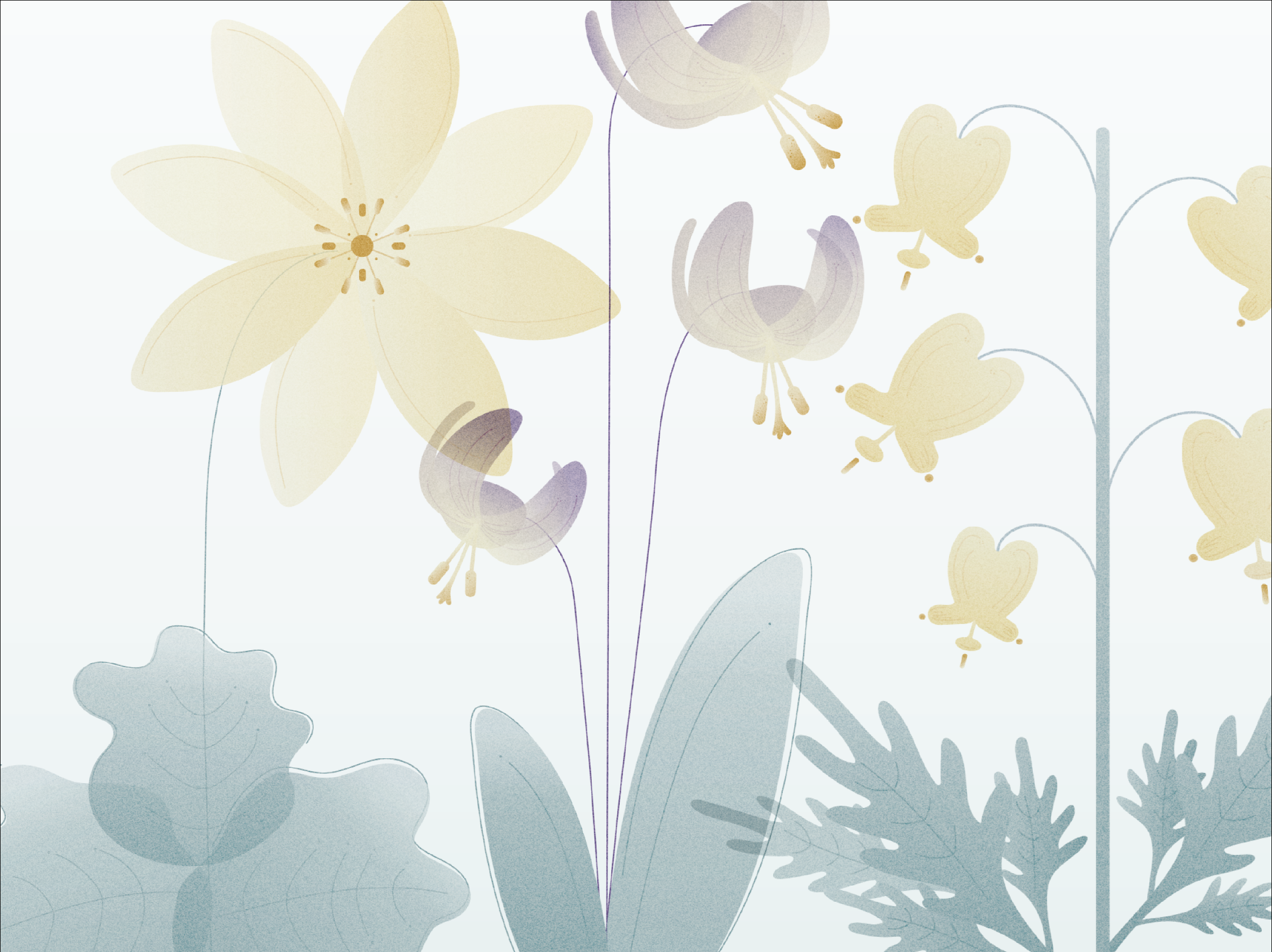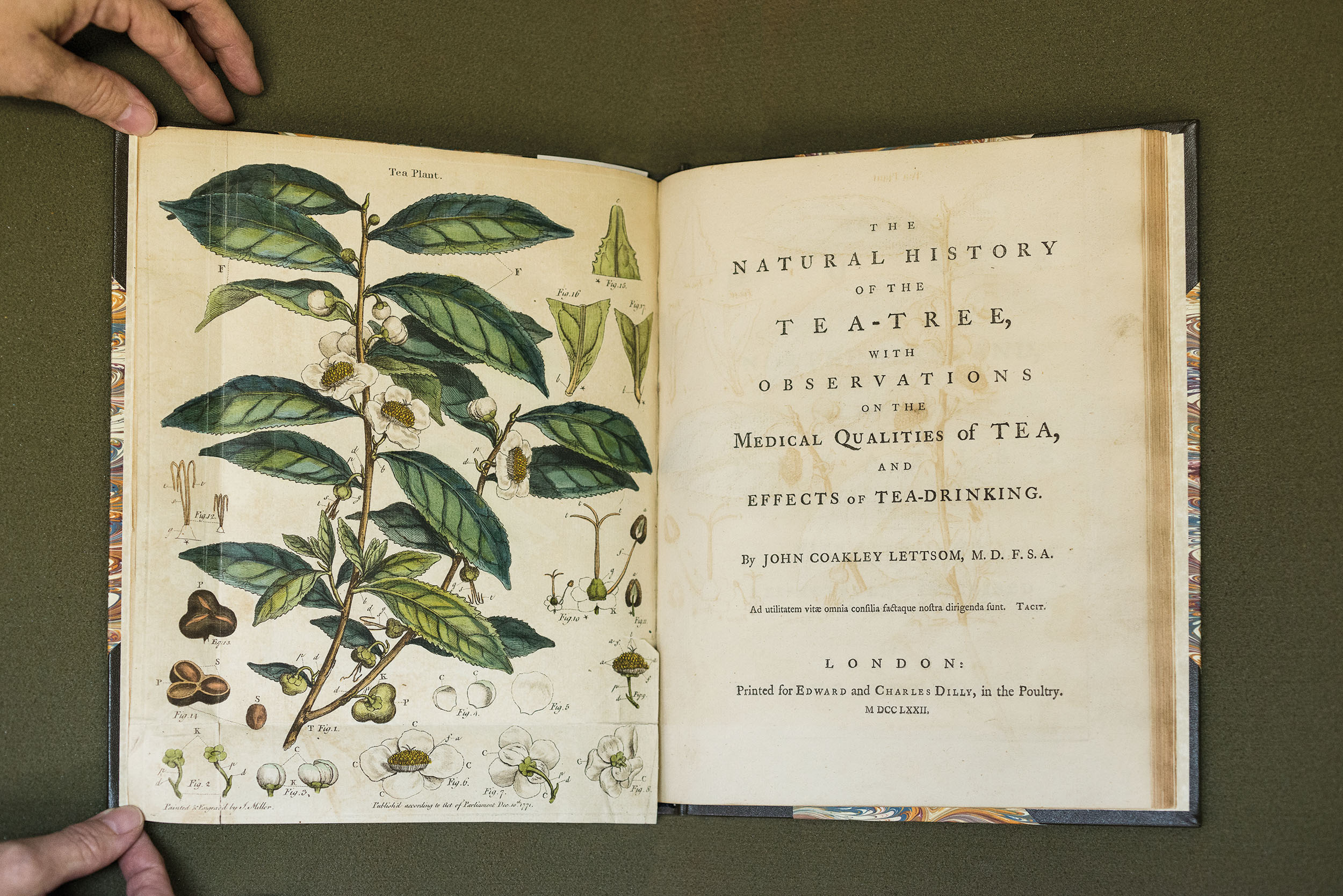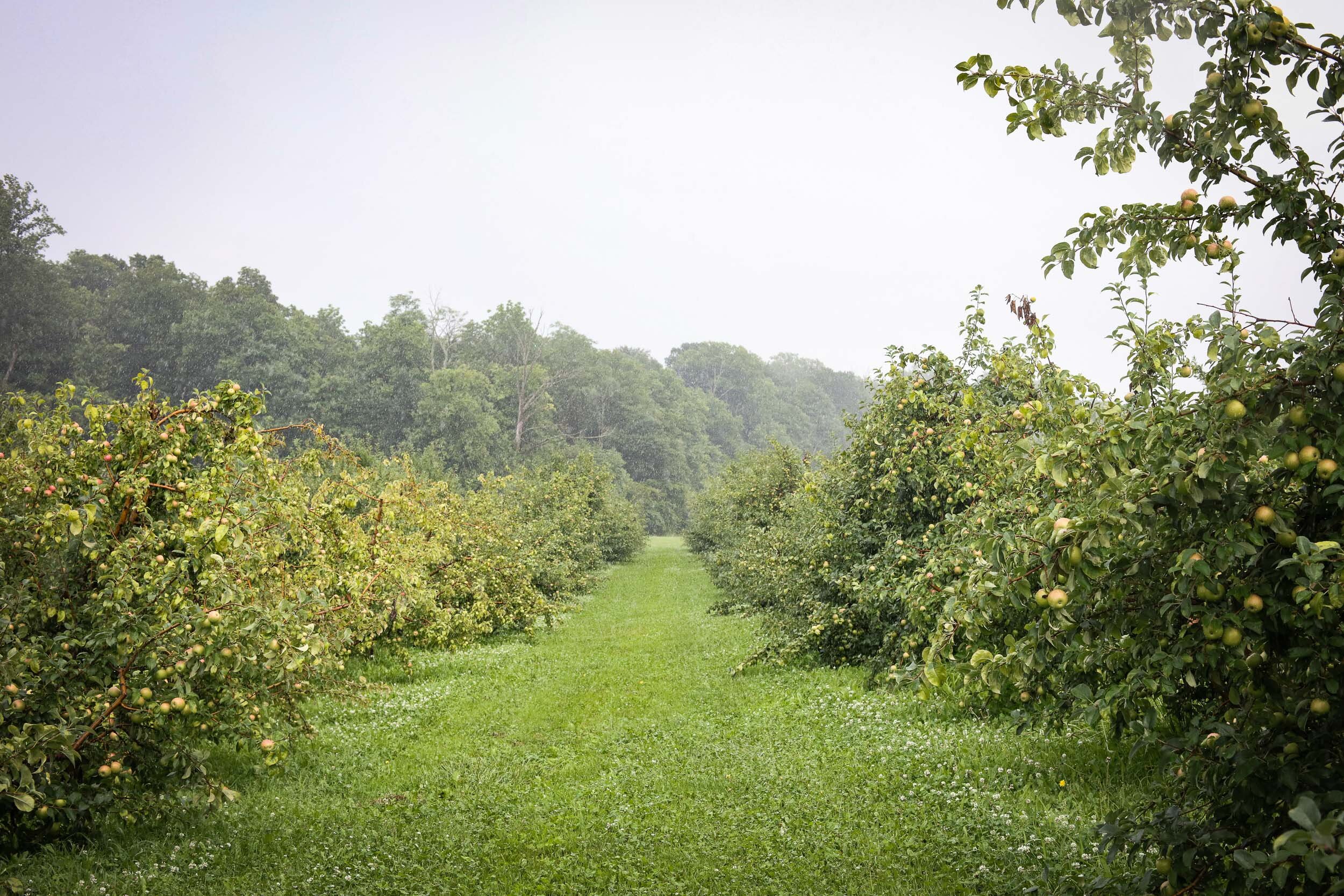Meet Aunt Lou

photography by Julie Kramer
A group of local seed savers is working to preserve an heirloom tomato variety brought to the Ohio Valley via the underground railroad.
Since the dawn of agriculture, we have saved seeds and carried them great distances. We did it to eat, or to preserve a taste we’d come to love, or to remember our people back in the bayou or holler.
As the seeds traveled, so did their stories: about who grew them and why. Heirloom catalogs are filled with as many stories as seeds. Radiator Charlie’s Mortgage Lifter, Molly Bean, Cherokee Red, Old Greek Melon. But when I learned the story behind an heirloom tomato with a spectacular African-American lineage, Aunt Lou’s Underground Railroad Tomato, I began to consider that heirloom seeds carry more than the distinctive colors, nutrients, flavors—and yes, stories—for which they’re loved.
Why Heirlooms Matter
Heirlooms matter because over the past century, as industrial agricultural ate away the patchwork quilt of family operations that once fed us, we’ve lost more than 90% of the variety of our food seeds. As the hybridized or genetically modified cultivars favored by large-scale farms have taken over, many heirloom varieties are at risk.
The loss isn’t just sad. It’s dangerous. As the biodiversity of our agriculture declines, so does food stability. The Irish learned this hard fact during the Great Famine of the 1840s. English landowners forbade growing crops other than the potato. When blight eradicated the crop, millions starved. We imagine ourselves safe from such deprivation. But take a drive across the American Midwest, and you’ll find fields planted in homogenous swaths of hybridized, genetically modified corn and soy.
Growers of heirloom, open-pollinated vegetables (meaning they generate savable seed that will produce nearly identical offspring) are one line of defense against another such collapse. Heirlooms perpetuate a pool of potential adaptations that, over a few short generations, can help the plant survive in changing conditions. Heirloom growers comprise a vast international network of informal exchanges among enthusiasts, a network more fluid than ever, thanks to the internet. This amounts to new freedom of movement for old seeds that were once passed hand-to-hand through families and localities. Nonprofits and small seed companies like Baker Creek Seeds and Seed Savers Exchange are doing their part to preserve and supply heirloom varieties.
And the global, grassroots organization Slow Food (of which there is a local chapter) is also assisting. Slow Food works to keep food “good, clean, and fair,” and it supports preservation through a registry that catalogs and promotes the cultivation and consumption of at-risk foods, including many heirlooms. It’s called the Ark of Taste, and it came about out of the understanding that “in order to save the thing, you have to eat the thing,” says local distiller, food scholar, and Slow Food Cincinnati member Jay Erisman. “In order to save the breed of pig, someone’s got to raise it and we have to eat it. In order to preserve this tomato we can’t put it on a pedestal and never touch it. It has to enter commerce.”
Thanks to Erisman’s nomination, Aunt Lou’s Underground Railroad Tomato was entered into the Ark of Taste in 2018. Even among the storied ranks of heirloom vegetables, this is a variety with a humdinger of a tale to tell.
Tracing Aunt Lou’s Roots
It arrived on the north bank of the Ohio River at Ripley, OH, brought, the story goes, by a black man fleeing Southern slavery. He nurtured the fruit, eventually passing it on to a woman named Lou, who passed seeds on to her great nephew. Today you might find it in gardens like that of heirloom tomato enthusiast and Slow Food member Vicky Tewes, who in 2017 alone grew 166 varieties of heirloom tomato at her small but productive Thistlehair Farm in Union, KY.
“The only way we’re going to keep them in our diet is to grow them out and save seed,” Tewes says.
The disappearance of heirloom varieties, she says, isn’t some passive loss. Large companies like Monsanto actively buy up small seed companies and shut them down. Globally, war and oppressive regimes are interrupting the supply of seed on which variety depends.
Tewes and growers like her are at the forefront of a movement. In March of 2017, she acquired a supply of Aunt Lou’s Underground Railroad seeds at the Michigan Seed Swap, attended by hundreds of growers. She gave them away at the annual Ohio Valley Seed Exchange, which she organizes. And that’s when I got my hands on some.
The Southern Exposure Seed Exchange website describes Aunt Lou’s Underground Railroad Tomato thusly: “82 days. (Indeterminate) Heirloom carried through the Underground Railroad by an unnamed black man as he crossed to freedom in Ripley, OH, from KY. Seeds were passed on to Aunt Lou, who passed them on to her great nephew, and eventually on to heirloom tomato enthusiast Gary Millwood. Dark pink, tangy and juicy, 4–12 oz fruits. Sparse foliage.”
According to Millwood, who had a hand in renaming the seed, the “unnamed black man” grew the plants outside of Rankin House in Ripley, home to abolitionist and Underground Railroad organizer John Rankin. Rankin shone a beacon from his home high on a ridge overlooking the Ohio River to indicate when conditions were safe to cross, and sheltered travelers in his home. In those days, the river at Ripley was a quarter of its present width, and the town’s abolitionist sympathizers made it an ideal crossing point.
These were valuable seeds, so tightly tied to a man’s identity that he felt compelled to carry them on his person as he fled to an uncertain future. The former slave cultivated the tomato in Ripley and shared them with the eponymous “Aunt Lou,” a white woman who then passed seeds to her great nephew, Francis Parker, of Sardinia, OH. Parker gave some seeds to his friend, Wilfred Ellis, proprietor of Ellis Seed Mill, and it was from Ellis that Brown County Master Gardener Susan Barber got the tomato at a CHOPTAG (Cincinnati Heirloom Open-Pollinated Tomato Associate Growers) exchange in 2004.
In the course of his research, Erisman learned from Barber that Parker was quite a character, who shared seeds with just about everyone he met. He penciled their stories on seed envelopes. It is on Parker, Barber cautioned Erisman, that the veracity of this story relies. But Millwood and Maria Stenger, of Berea, KY’s Blue Ribbon Tomatoes, believed Parker and felt the story ought to be preserved. They grew the tomato, saved seeds and, after consulting Ellis (Parker had by then died), decided to reintroduce it to the world as “Aunt Lou’s Underground Railroad Tomato.”
Top: a look inside a conventional tomato. bottom: the deep red sweet pulp of the heirloom fruit Aunt Lou.
Heirloom Advantages
Nutritious and delicious. Many modern varieties have been bred to make them tough for transport, sacrificing flavor. In fact, many traits that favor the market—including hybrids’ tendency to ripen simultaneously so that they’re more cost-efficient to harvest—have usurped qualities that make them perfect for your yard and kitchen: great flavor, nutritional value, texture, and an ongoing supply.
Sociable (and cheap). Your initial seed costs are likely to be higher with heirlooms but will drop once you start saving seeds. Start trading those seeds and you will inevitably discover more varieties of seeds—and people.
Adaptable. Heirlooms are often criticized as producing low yields and being susceptible to disease and pests. But over a few growing seasons they are capable of “localization.” That means they adapt to your soil and climate, and become resistant to disease and pests, making them eventually more productive (and reliable) than modern counterparts.
Erisman is the first to admit that there are gaps in the story. “Exactly how he came to Ripley, and was it on the Underground Railroad?” he wonders, “That is to say, pre-Emancipation Proclamation? Was he an escaped slave or was it post-Civil War? That is not known. But the bottom line is he was quite surely an African-American ex-slave. It fits in the location and timeline, and furthermore every link in the chain of transmission attests to that fact.”
Couple that relatively short chain with the level of trust and exacting, hard work inherent in growing and sharing seeds, and there’s no reason to doubt Parker’s claim. Those who put the time and hard work into growing and saving seeds don’t enter into that contract lightly. The person who carried those hard-won seeds trusted Aunt Lou. She and the great nephew to whom she entrusted them showed respect for their bearer.
Stenger first offered the seeds in the 2010 Seed Savers yearbook. From there, the variety spread to seed catalogs and internet lists, spiking in popularity. But Erisman, Tewes, and Slow Food Cincinnati aren’t taking any chances. They think this tomato’s story is too important to sit on, so they’re actively spreading the word—and the seeds.
Historic Foodways
Slow Food Cincinnati board member Sue Morgan says they’d like to partner with or support The Underground Railroad Freedom Center to further spread the seeds and the story of Aunt Lou’s Underground Railroad tomato.
This isn’t about appropriating African-American heritage for marketing. No one’s going to get rich selling heirloom tomato seeds. Erisman envisions a program that folds Aunt Lou’s Underground Railroad Tomato into the larger picture of African-American foodways, underscoring the incontrovertible culinary truth that so much of what we think of as “good old American cooking is black cooking,” he says. “Biscuits and gravy, barbecue.” All born from the hearths and ingenuity of enslaved peoples of African origin.
So Aunt Lou’s Underground Railroad Tomato seeds contain both future delicious fruit and a narrative. Its place as an honored guest at the Ohio Valley Seed Exchange’s 2017 down-home, countrified gathering runs counter to another story that’s going around these days—a dispiriting narrative, fueled by our era of political upheaval, that our country’s racial divide is as wide and deep as it’s ever been. Yet the story of Aunt Lou’s Underground Railroad trumps these latest tall tales. Because while those gathered at the exchange tended to be white, they’re anything but prejudiced. To them, the unique characteristics of all the Good Earth’s inhabitants are to be cultivated and revered.
Under lamps in the early spring of last year, my partner, Jen, sowed several seeds. Only one germinated. But planted out, it soon weighed down the tomato cage with an abundance of tangy, quick-ripening fruit. Around that prolific vine there stands the story. It links the past to the present and future—and all of us to one another.
This issue’s Garden column made possible, in part, by the generous support of Deeper Roots Coffee.
Oakley Coffee Bar | 3056 Madison Rd. | Cincinnati, OH 45209
Findlay Coffee Bar | 1814 Race St. | Cincinnati, OH 45202
Wholesale, Consulting, Equipment, and Training • DeeperRootsCoffee.com • 513.655.6535
Ever since his grandfather put him to work squashing potato bugs and shoveling compost in a vast organic garden north of Philadelphia, Cedric has loved the outdoors. These days, he squashes bugs for his green-thumbed partner, Jen. His writing has appeared in Saveur, Cincinnati, This Old House, and Belt magazines. He is the Collector at the Mercantile Library Downtown.







